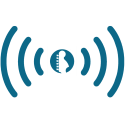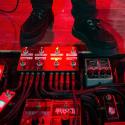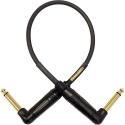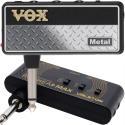The Guitar Accessories List - The Complete Checklist
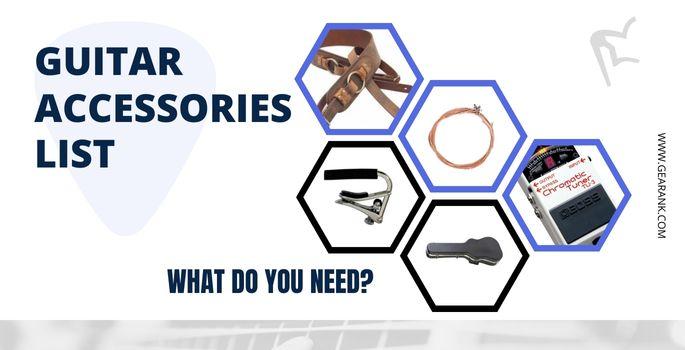
Take a look at this guitar accessories list, and you'll find the basics of your playing toolbox. These accessories will round out your guitar rig, providing you with the pieces you need to expand your craft.
Guitar accessories can be used to get you started and to take your playing to the next level. Some of these accessories are basics that you'll need immediately, but some you can slowly add to your rig as your playing improves.
Ready to build your rig? Check out these essential guitar accessories for the best tools around.
Choosing The Best Guitar Accessories
There are some guitar accessories you can't live without, and some are only necessary in select circumstances. In this guide, I've tried to include mostly the essentials. Plus, a few that will help you grow as a musician.
There are many more items that there wasn't room for on this list. If you use sheet music, we recommend a music stand. A string winder can save time, and a guitar slide adds new dimensions to your playing. This is just the start!
-
Guitar Pick
A guitar pick, or plectrum, is used to strum the strings of both acoustic and electric guitars. You need to get a good few picks when you start playing. They have a tendency to get lost easily.
Picks are available in different sizes and thickness. Lightweight and thin picks are great for learning to strum. They're very responsive. Look for the thinnest picks you can find. Around .46 mm is excellent.
Medium picks are better for plucking individual notes, while thicker picks offer the best control. I recommend picking some up in all sizes and thicknesses. That way, you can play around to find what works for you.
The range of picks available can be overwhelming, but they are not expensive. Grab a few different types so you have a chance to experiment. You can even get multipacks of different thicknesses if you're just starting out.
-
Guitar Strings
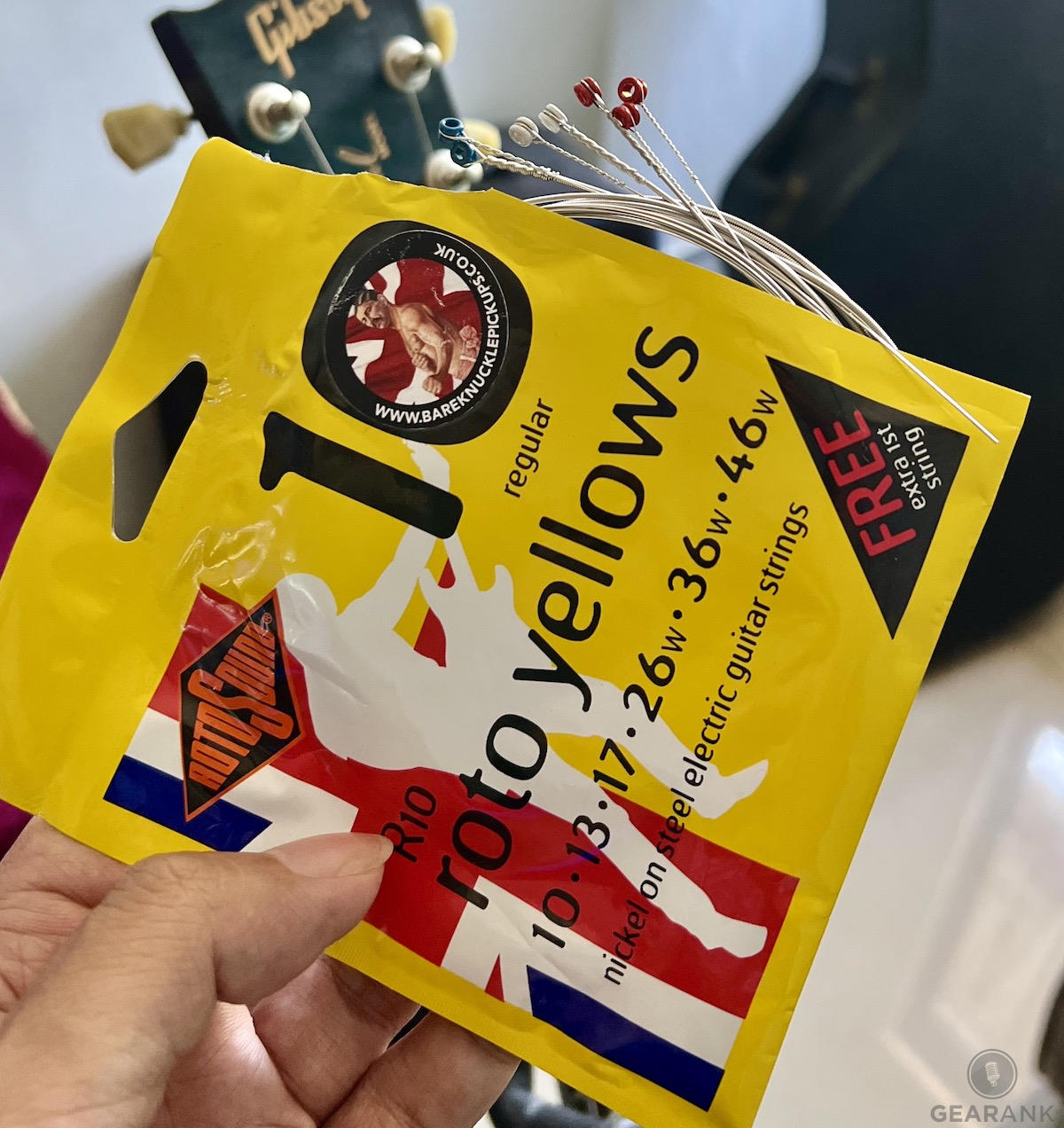
Every guitarist needs a spare set of strings on hand at all times. Even if you've just bought a new guitar, you want some extra strings ready to go. That way, you won't have to panic when one inevitably breaks.
Guitar strings need to be replaced regularly. They break with use and age, so any guitarist who practices frequently will burn through strings. And a guitar string does have a tendency to break at the worst possible moment!
Strings also become dull with age. To keep your playing tight, you'll need to get in the habit of changing strings when they start to lose quality. And sometimes you want to change strings to adjust the tension and the sound! Changing guitar strings is a part of regular guitar maintenance.
It's worth having two backup string sets on hand at all times. For an electric guitar, choose nickel strings or stainless steel strings. For an acoustic guitar, try either 80/20 bronze or phosphor bronze strings.
-
Guitar Tuner
Whether you've just started learning or you've been playing for a while, you need a guitar tuner. A guitar tuner keeps your guitar sounding right. If you don't have one, everything you play will just sound wrong.
A guitar tuner is fairly self-explanatory. It helps you keep your guitar in tune! You can tune a guitar without an accessory — and it's a useful skill to have — but the tuner makes it that bit easier.
There are a lot of types of tuners out there. The easiest method for beginners is to download an app. Fender has one called Fender Tune, but there are a lot of options. These are great for tuning at home
Alternatively, you can invest in a headstock tuner. These clip onto the headstock and are preferred by acoustic guitarists. If you play an electric guitar through an amp, consider a pedal tuner.
-
Guitar Strap
The guitar strap isn't the first thing you need when buying a guitar, but it is a useful purchase. You will need a strap if you ever want to play standing up. Even if you aren't there yet, purchasing one now can help you get used to the feel.
Guitar straps help to stabilize the instrument against the body. Without it, you'll find the guitar shifts and slips while you play. It also takes some of the weight. You can play for longer with a strap offering support. Some specialized straps work with strap locks for improved stability and reliability.
There are many styles and types of straps available. Comfort should be the main focus when choosing. A two-inch width is comfortable and supportive. Padding is useful for a particularly heavy guitar.
Once you've sorted the basics, you can begin to think about the look. Choose guitar straps that you like the look of and that match your guitar. A strap can be a pretty cool guitar accessory!
-
Guitar Case (Or Gig Bag)
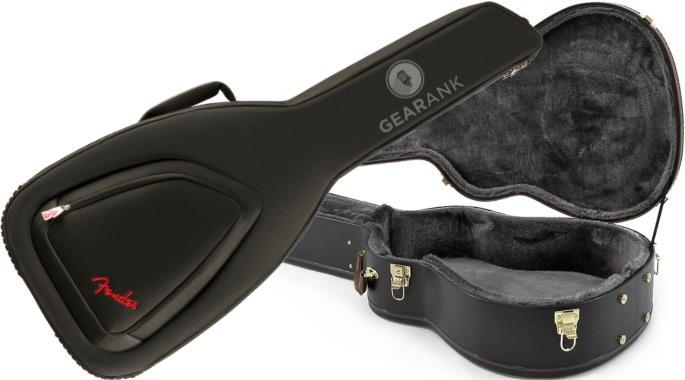
It's much better to invest in a case now than pay for a new guitar when yours gets dinged and damaged. Guitars aren't exactly delicate, but bumps and scratches can affect their sound and appearance. Plus, they're expensive to get fixed.
There are two types of cases you can invest in: the hard case and the gig bag.
Hard-shelled Case
Hard shell case is good for guitar players who tour and gig. You can find hard cases for both electric and acoustic guitars, designed to offer a high level of protection. Using the hard case, your guitar is protected from even serious bumps.
Gig bag
Gig bag is a softer case. They often come with straps, so you can wear the guitar on your back. Gig bags are less expensive, but they're great for protecting your guitar from dust around the home.
Another big advantage of the case is that it makes your guitar easier to carry. So, even if you don't play outside the house, it's worth picking up a gig bag.
-
Guitar Stand
What do you do with your guitar when you aren't using it? Tuck it away in a corner and forget about it? Set it down on the floor and hope no one knocks it over?
The right answer is: that you put your guitar on a guitar stand. This is a low-cost investment that can protect your guitar and improve your playing.
First, a guitar stand keeps your guitar upright and secure. It won't get knocked over or bumped into, so it’s safe from harm.
Second, a guitar stand prevents your guitar from being out of sight and out of mind. You'll feel much more compelled to practice when you can see your guitar every day. And the more you practice, the better you play.
As one final benefit, the guitar is a pretty beautiful instrument. When it's on a stand, it can be displayed for everyone to see and appreciate.
In addition to a guitar stand, you might want to invest in a music stand and a guitar wall hanger!
-
Capo
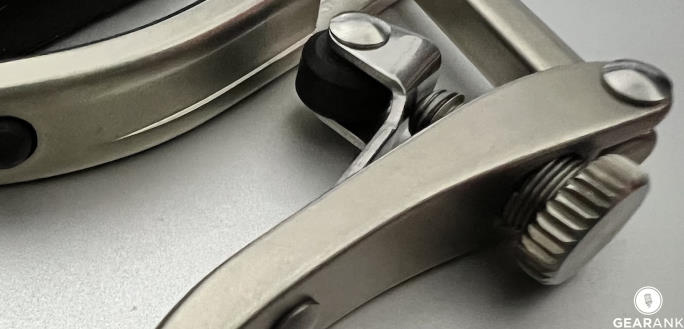
If you're ready to move beyond basic chords, then it's time to invest in a capo. A capo is a simple device that can be clamped onto the neck of a guitar. It presses against the strings, shortening their length.
By shortening the strings, a guitar capo allows you to play in a different pitch without retuning. You can expand your repertoire, tackling songs that would otherwise be difficult to play.
A capo is also really useful if you play with a singer (or sing yourself). You can quickly adjust the key to find something that works.
It's worth looking around to find a good capo. As they press against the frets, a cheap capo can end up damaging your instrument.
One final note on capos: if you play a classical guitar with nylon strings, you'll need a different shape. They should be flat, not curved.
-
Guitar Cable
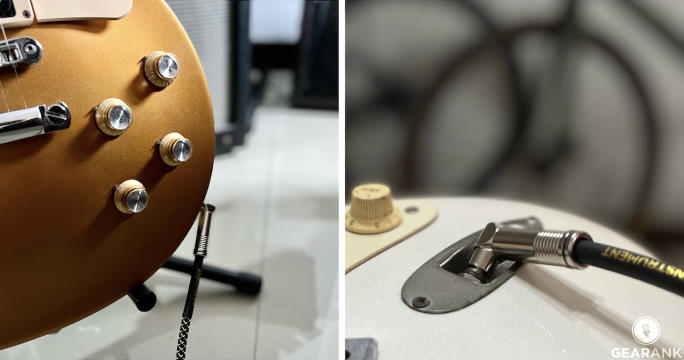
An incredibly useful accessory for any electric guitar player is the guitar cable. These cables connect your guitar to the amp, as well as certain pedals. (You'll also need an amp, but that's not exactly an accessory.)
Any experienced musician will tell you that it's useful to have a spare set of guitar cables. Like strings and picks, cables get lost and broken very easily. Having spares to hand will mean you never get stuck silent when a cable wears through.
A guitar lead connects your instrument to the amp. It's pretty much essential equipment for a guitar. Without cables, you won't be able to hear what you're playing.
Different cable lengths can come in handy, particularly if you play gigs. Having a 20' lead can prevent you from getting stuck at the back of the stage. And a 10' lead can be used when you're tripping over each other.
If you like to use guitar pedals, then you'll need some patch leads as well. Again, it helps to have backups, just in case of breakages.
-
Guitar Humidifier
One of the best acoustic guitar accessories is the guitar humidifier. This can protect the wood from changes in temperature and humidity. When exposed to these changes over time, the wood can warp and even crack.
A guitar humidifier sits in the guitar case. It can keep the atmosphere in the case regular, preventing sudden changes that damage the wood.
If you don't have a case, or you have several acoustic guitars, it might be worth getting a room humidifier instead. This protects the entire room, safeguarding multiple guitars at once.
A third option is the soundhole humidifier. This small device rests between the strings and hangs into the guitar. Inside the device is a sponge that releases moisture to prevent the wood from cracking.
A humidifier is primarily useful for acoustic guitars but can benefit electric guitars. If you live somewhere particularly dry, consider getting a humidifier for an electric guitar.
-
Guitar Cleaner
It might not be the most exciting part of guitar ownership, but cleaning is an unavoidable necessity. Cleaning will not only keep your guitar looking good, but it can also help ensure it sounds better for longer.
When we talk about cleaning a guitar, we don't mean it needs a proper scrub. But your Guitar's Paint and hardware are exposed to a lot of general grime regularly. Every time you play, sweat and oil from your hands can affect the surface.
So, make sure to regularly wipe the neck and stings with a microfiber cloth. Wipe down the metal parts with a dry cloth. You don't need any extra cleaning materials for these parts.
For the guitar's body, the main surface, use a guitar cleaner. These are designed specifically to be gentle on the surface. It will add an attractive sheen to your guitar, and by clearing away the grease, you can limit the risk of warping.
Get into the habit of regular guitar maintenance and you should avoid general wear leading to major damage.
-
Recording Device
For any beginner teaching themselves guitar, a recording device is a must. It offers something like an outside perspective. It's much easier to assess your playing when you can listen to it back.
Some guitar amps have built-in recording feature, but the most accessible recording device is your phone, computer or tablet.
At first, using a recording device is going to be a little strange. There will be times when you think you sounded amazing, but the recording says differently.
But the opposite will also happen. Sometimes you'll think your playing was just okay. Then you'll listen to it back and be impressed at how far you've come!
Without a recording device, it's hard to know how much you've progressed. It's also harder to pick up on areas that need improving. With a recording device, you can identify and fix bad habits quickly.
A recording device will also benefit advanced beginners looking to branch out and start jamming. Record yourself playing guitar chord progressions. Then play back the recording, and use it as a backing track for jamming.
-
Guitar Slide
A guitar slide isn't the kind of equipment you'll turn to frequently, but it's an exciting accessory to have. A guitar slide comes in a tubular shape, made from glass, metal, or ceramic, . This tube is placed over a finger on your dominant hand.
As you play, the string hits the guitar slide to transform the sound. This allows for smoother tones, especially when sliding up or down the neck. It's very popular in Blues music, but you can hear it in pop and rock as well.
Guitar slides are a fun addition to your playing toolbox. They expand the types of sounds it's possible to create with a guitar. And they are a must have if you're planning to play a resonator guitar.
Frequently Asked Questions
What Accessory Should I buy with an Electric and Acoustic Guitar?
These are the day one accessories that you ought to get along with your acoustic or electric guitar. You need to have spare strings, some guitar picks, a capo, a case, and a tuner. It also makes sense to have tools for string changing and maintenance, you need a string winder and string cutter. While you can live without these tools, believe me when I say that they will make string changes and maintenance easier.
What Are The Best Electric Guitar Accessories?
For an electric guitar, your toolkit should have spare electric guitar strings, picks, a tuner, and a protective case. The main difference is the need for spare cables for connecting to a guitar amp or guitar pedals. It is also wise to have a spare tremolo arm if you have a non-fixed bridge.
Is the Guitar Accessories list different for Acoustic Guitars?
The essentials are pretty much the same. Spare strings and picks are a must. Along with guitar tuners. One thing that will help a lot when changing acoustic guitar strings is a bridge pin puller. It also won't hurt to have spare bridge pins. Remember that you don't have to go wild and buy everything. Prioritize the most essential guitar accessories that can help you focus on practicing and playing guitar.
Conclusion
Investing in the accessories mentioned here will make the hard parts of guitar playing and maintenance more bearable. They will allow you to focus more of your effort on practicing and enjoying your instrument.
Many of my suggestions also make good gifts for the guitar player in your life! Take the guitar strap, for example. And no musician will turn away extra strings or guitar cables.
What essentials would you add to this guitar accessories list?



